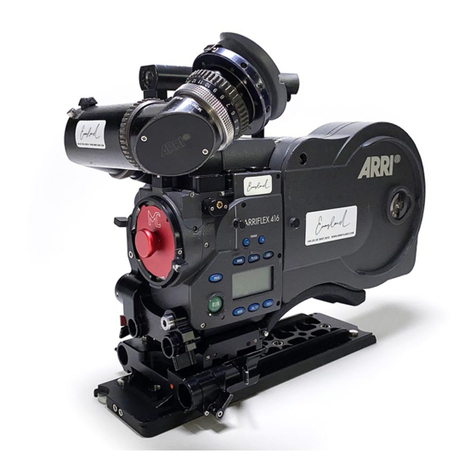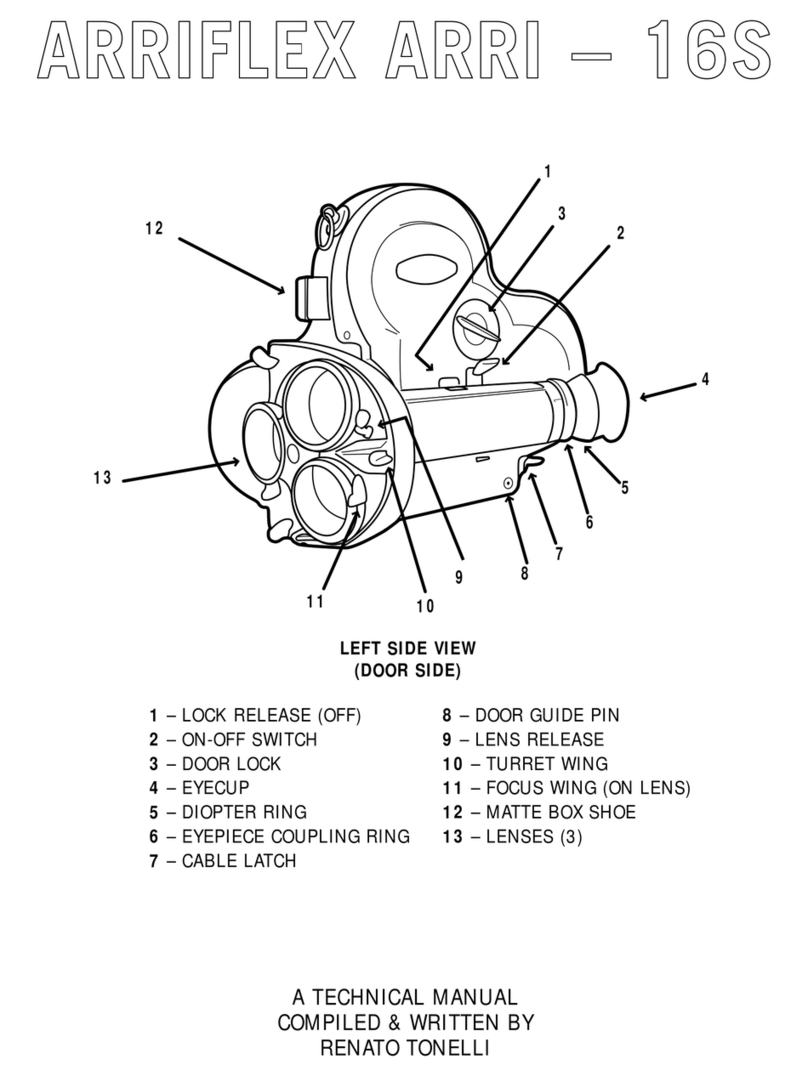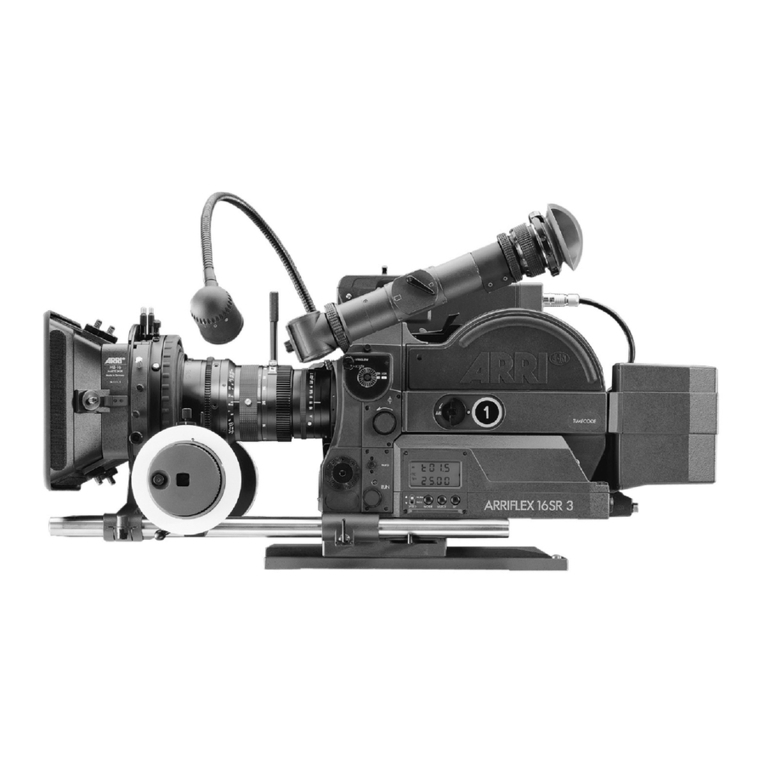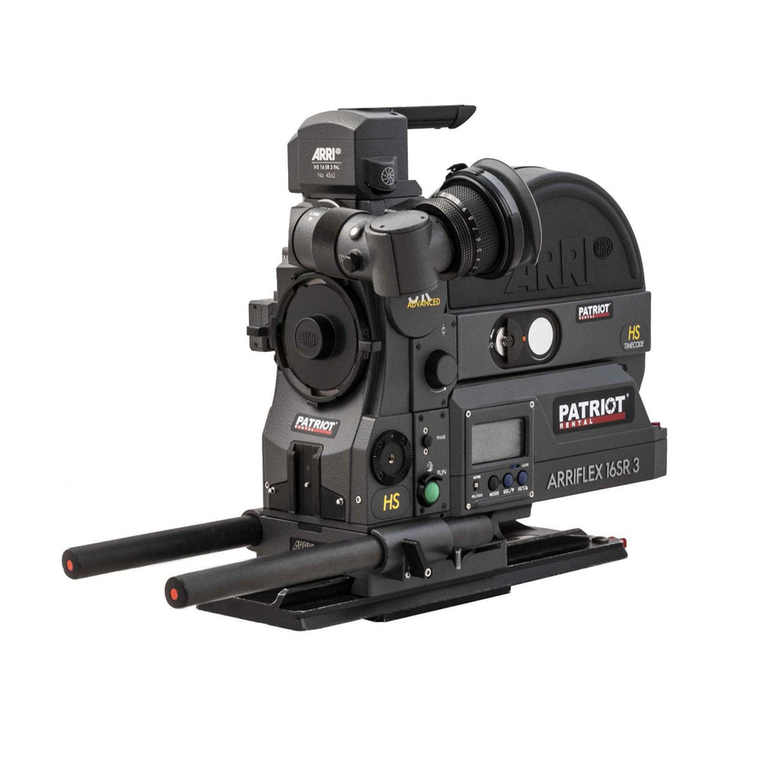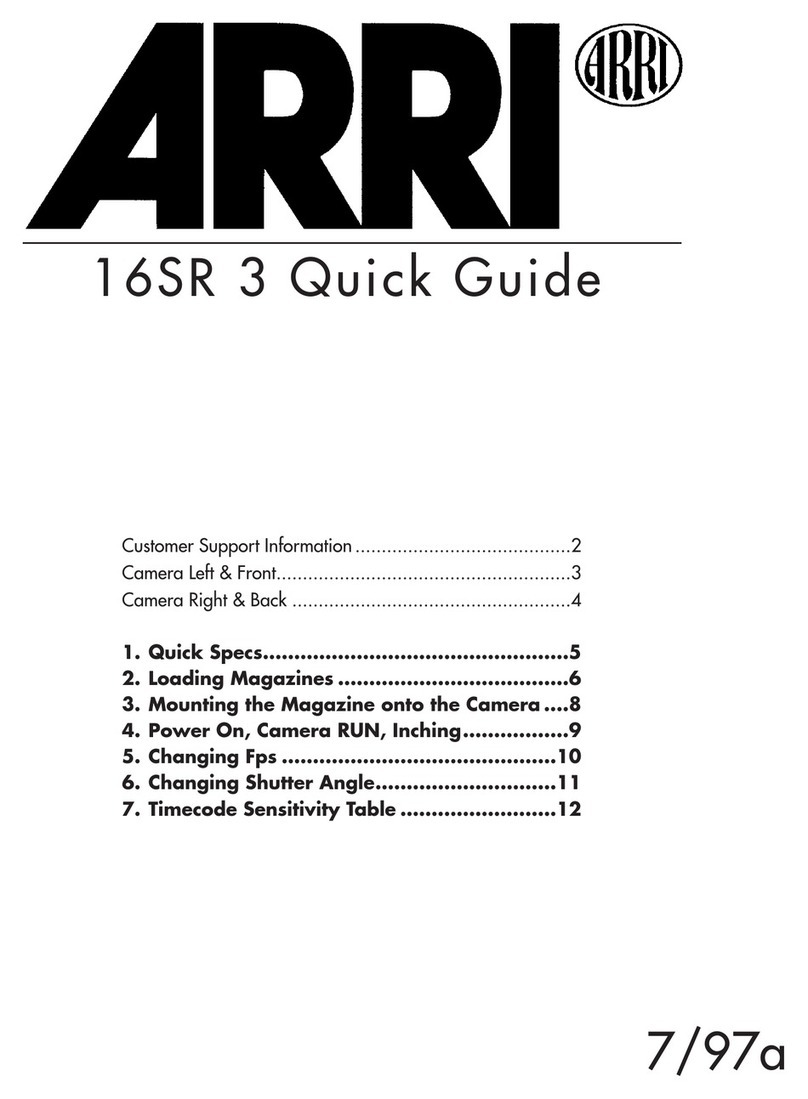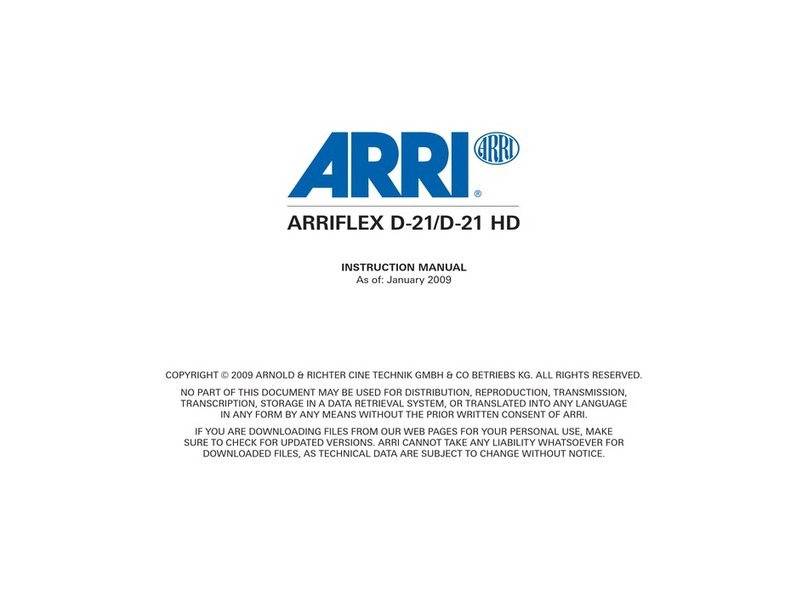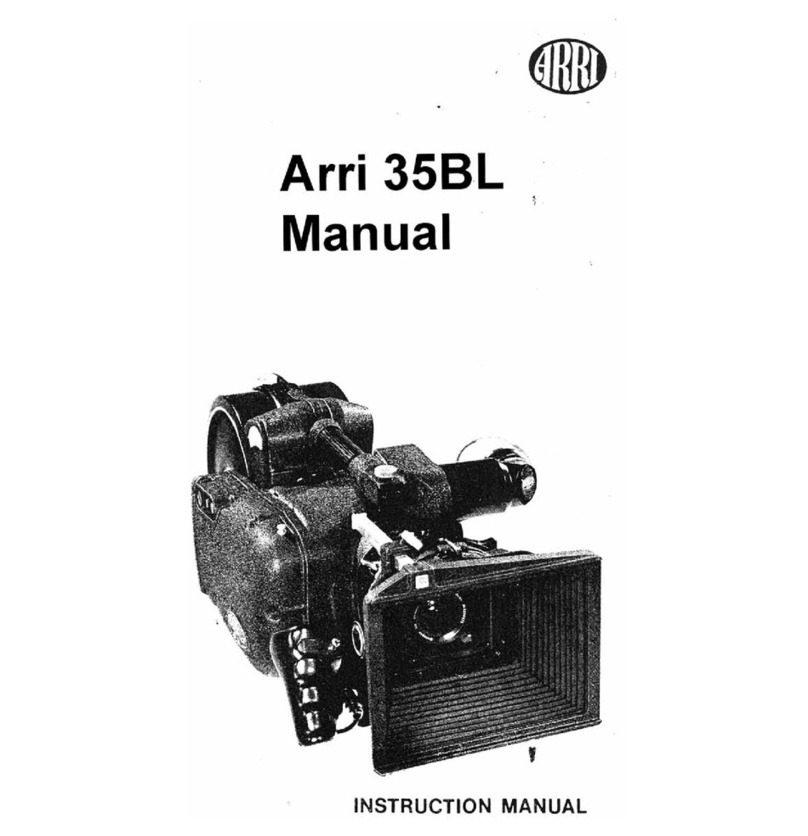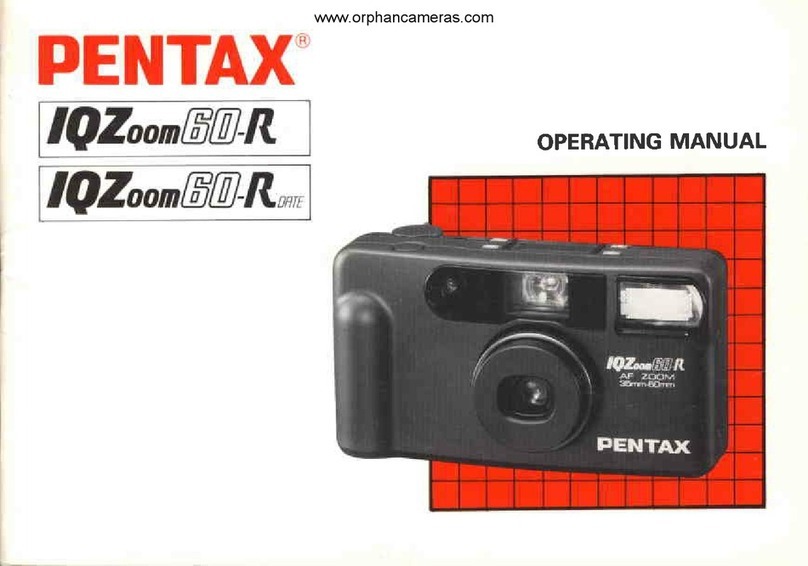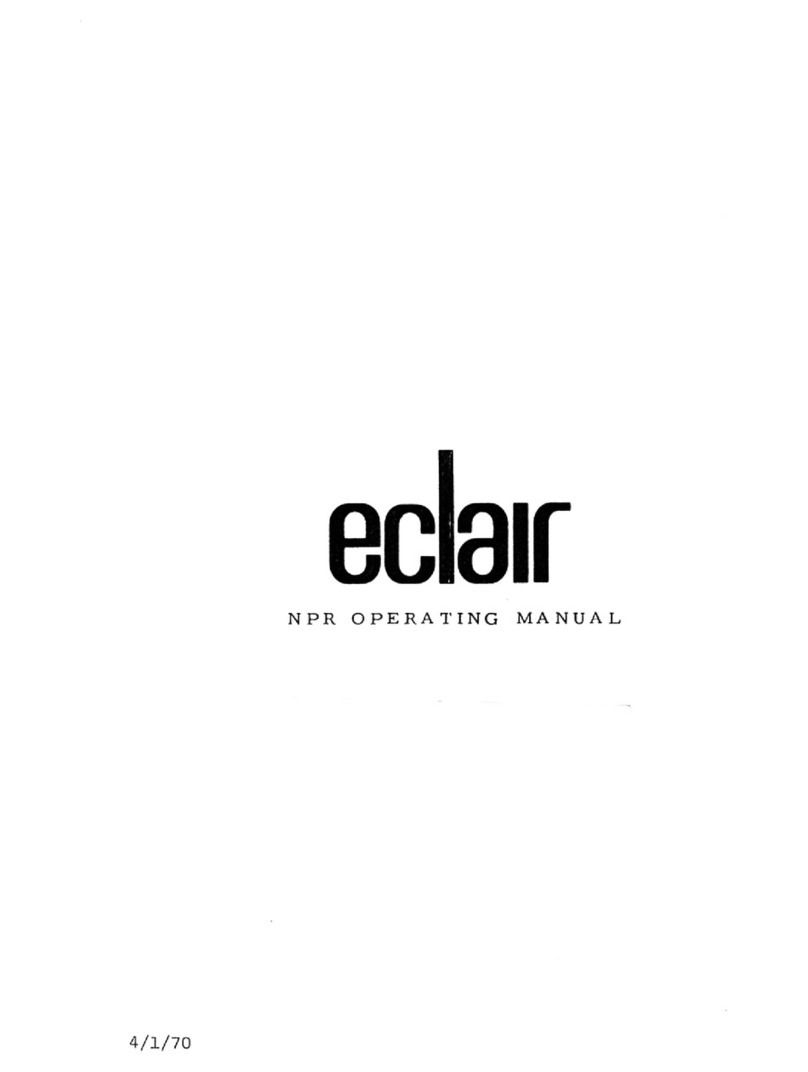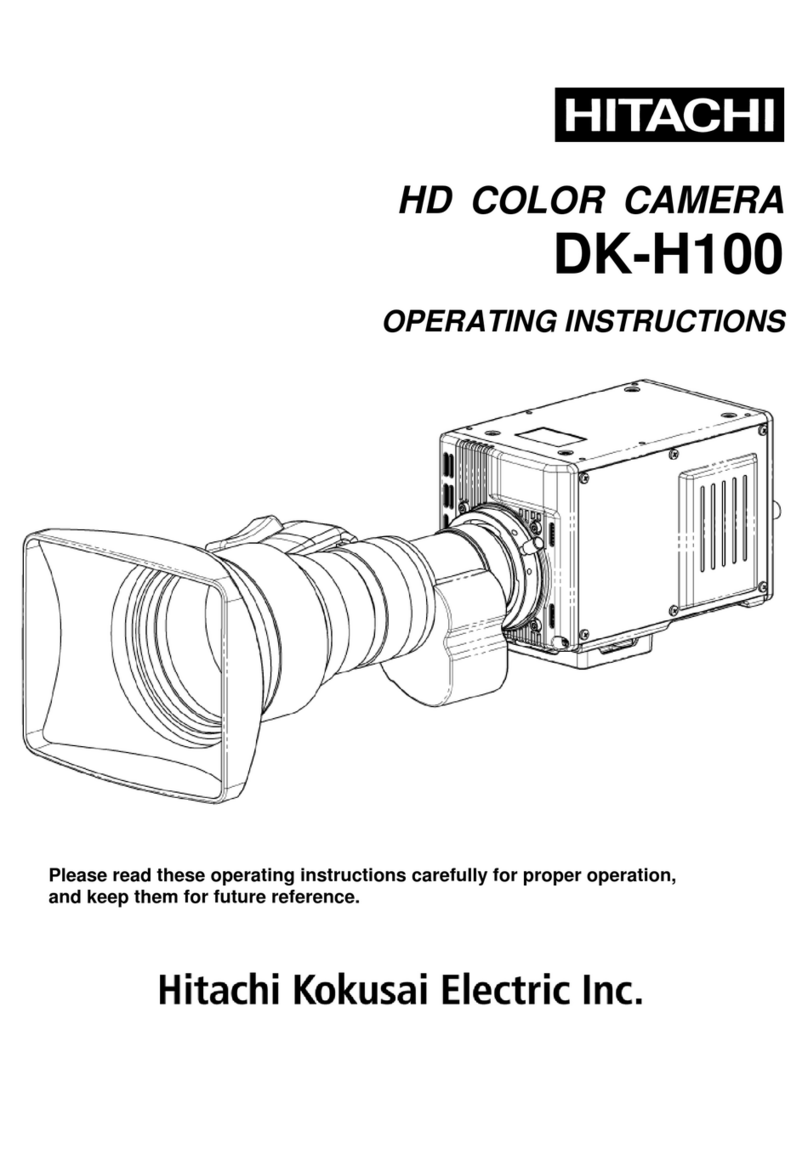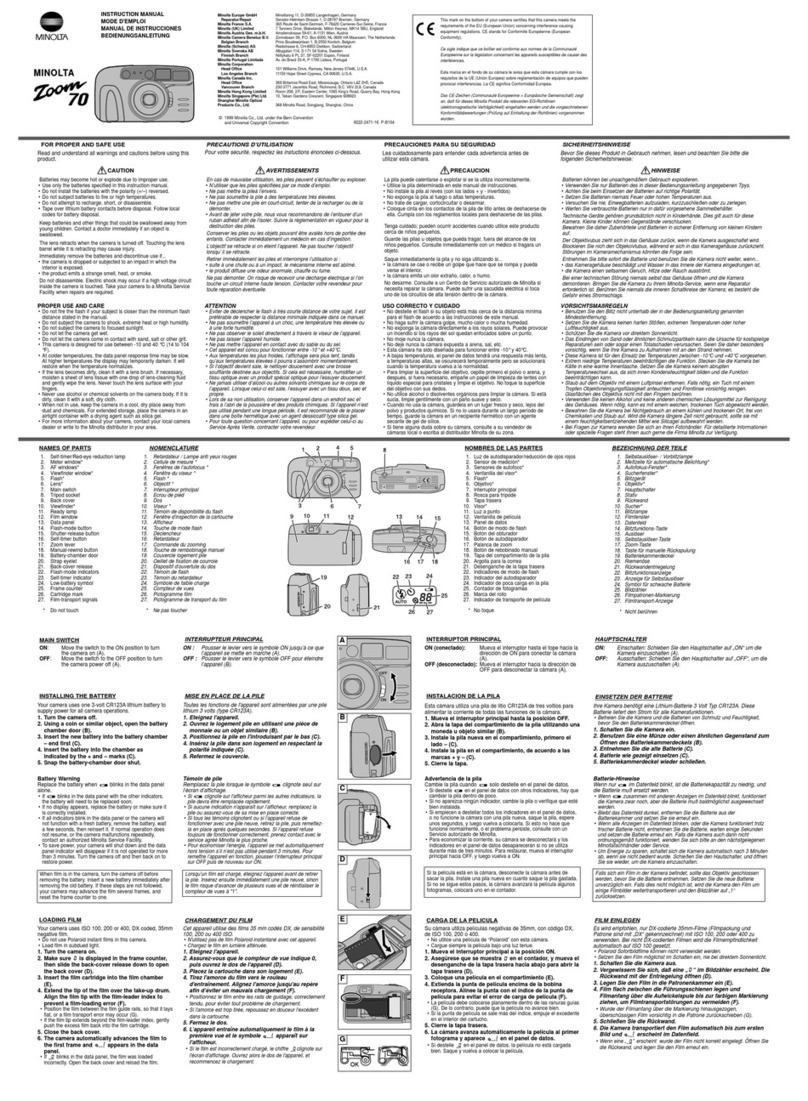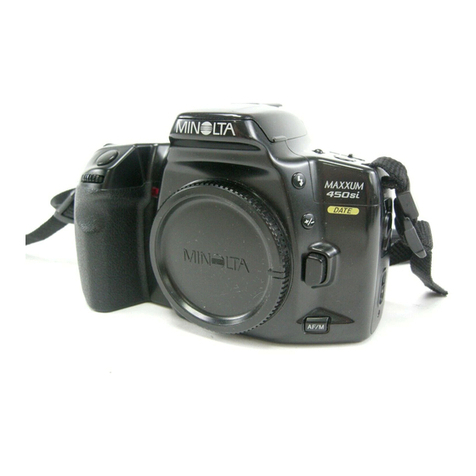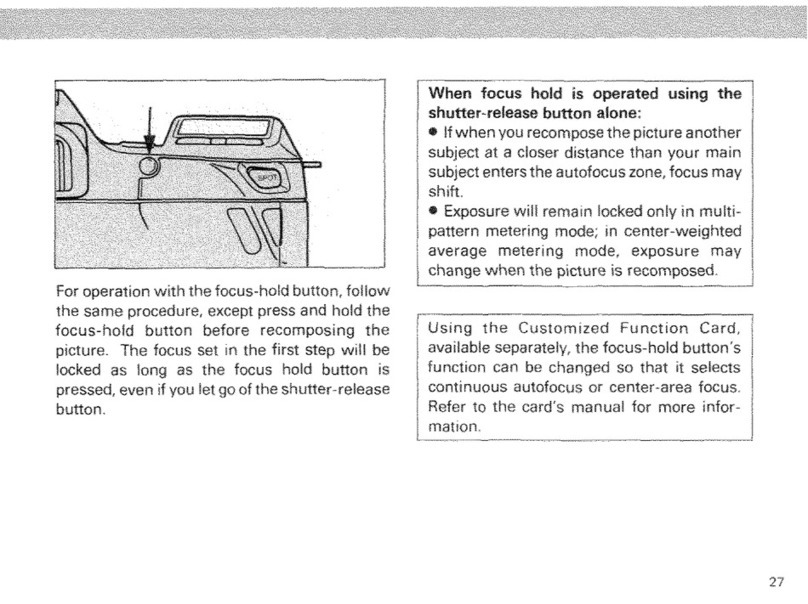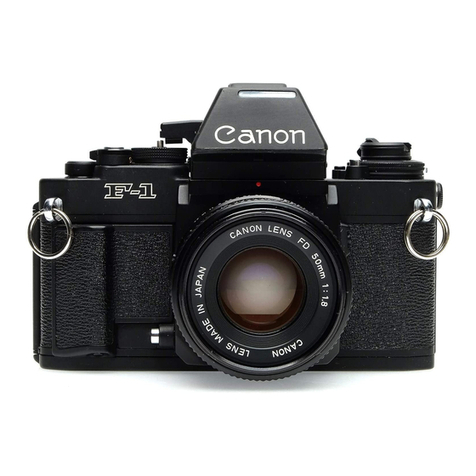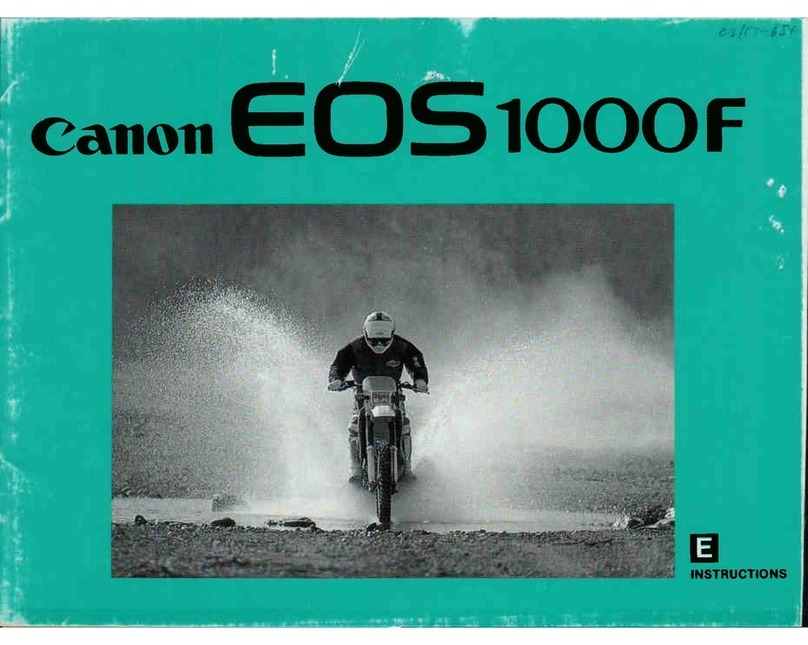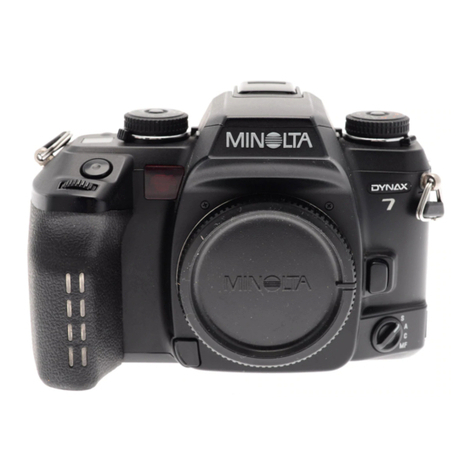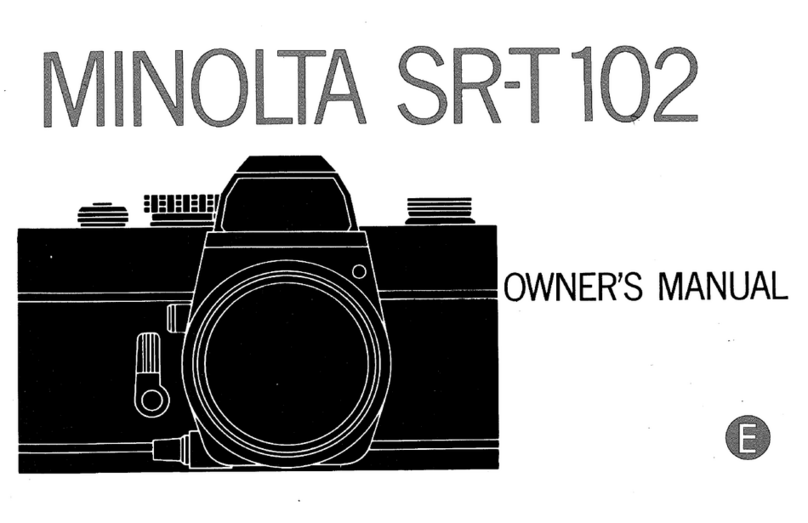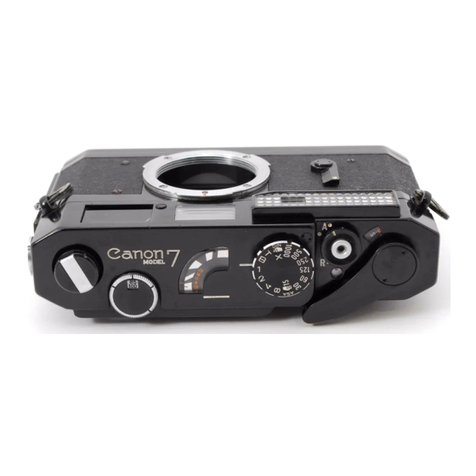
CONTROLS. The main controls and connections are
sited at the rear of the camera. These are a 0 to 50
f.p.s. tachometer, four digit foot counters with zero
reset button, a socket for connecting the battery
cable, earphone connection socket, Pilotone socket,
indicating lights to show when the camera is running,
another to show when the sync mechanism is running
and another for the edgemarking system. The on-off
switch is placed on the body of the motor.
VIEWING SYSTEM. This is identical to all other
Arriflex 16 models, viewing through a mirror shutter
at 45˚ of the plane of the film. The image is seen
through a swivelling periscope viewing system with
automatic closing eyepiece which can be adjusted to
any operation position and allows for viewing with
either the left or the right eye. An accessory can be
added to raise the viewing axis for shoulder operation.
The image obtained is bright and is conveniently
enlarged (x 10) and permits focusing with ease. The
ground glass can be interchanged for one with grids,
TV safe area, cross hairs, etc.
MAGAZINES. The camera takes the usual type of magazine made by this company for 200 and 400 ft.
loads. These have a built-in drive system and blimp and are of the single chamber type. They are pro-
vided with a footage counter calibrated in feet or metres, according to buyer’s needs. A loop of film from
the magazine allows rapid threading.
BUILT-IN EXPOSURE CONTROL SYSTEM. At the request of users a built-in exposure control device can
be added to the Arriflex BL which measures light values over an area equivalent to 50 per cent of the
16 mm field. This is built into the viewing system and indicates the exposure in the viewfinder. The
meter uses a CD cell and has a film speed setting range from 16 to 500 ASA. The controls of this sys-
tem are on the front end of the camera door.
SINGLE-SYSTEM SOUND MODULE. This camera allows for easy installation of a module containing a
recording head, a playback head, and inertia flywheel and several guide rollers. By this means sound
can be recorded on the magnetic track which is coated on the film. A transistorized amplifier has been
designed for this purpose and is provided with two sockets for a pair of low impedance microphones
with individual speech/music switches, gain control, and modulation meter.
ACCESSORIES. As in the use of other models made by this company, there is a wide range of acces-
sories for the BL to meet the most varied requirements and to adapt the camera to any kind of work.
Among them are an oscillator for tape recorder, 1200 ft. coaxial magazine, carrying handle, pistol grip
with trigger release, filters, carrying and storage cases, shoulder pod and batteries.
(1) Tachometer, (2) footage or metre indicator, (3) start marking lamp, (4) oper-
ation control lamp, (5) manual scene control lamp, (6) earphone connection, (7)
camera motor connection, (8) zero reset, (9) toggle switch


